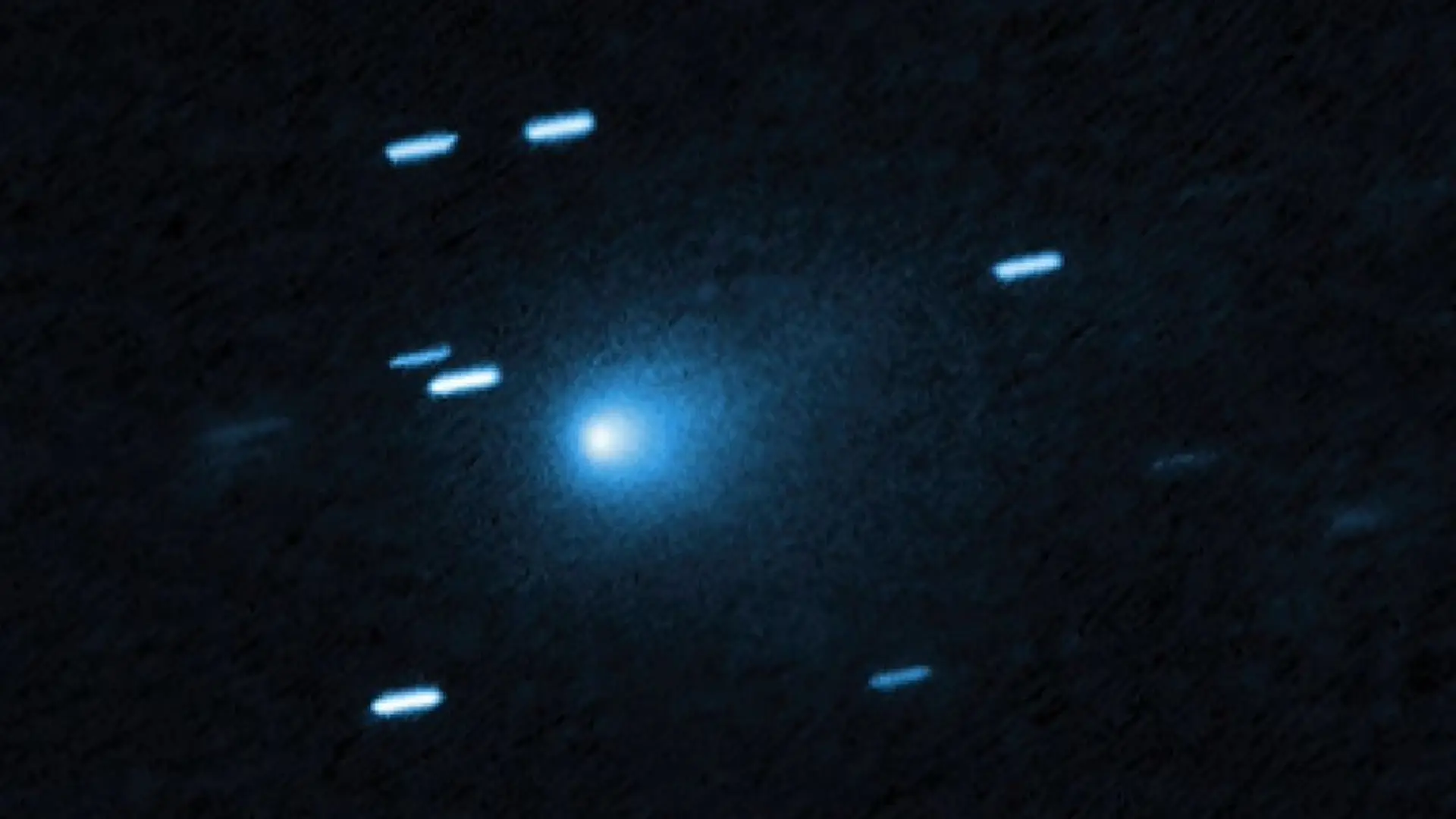"He acts as a science popularizer": Physicist Avi Loeb slams Brian Cox's theory about interstellar object 3I/ATLAS
-
 Interstellar comet 3I/ATLAS (Image via NASA)
Interstellar comet 3I/ATLAS (Image via NASA)Interstellar object 3I/ATLAS was first reportedly observed on July 1, 2025 by the NASA-funded ATLAS survey telescope in Rio Hurtado, Chile. Since then, the interstellar object has remained a topic of debate among scientists and other space enthusiasts.
A recent clash emerged between Harvard physicist Avi Loeb and British physicist Brian Cox, who shared contrasting opinions on the subject.
In a Medium article published on October 31, 2025, Harvard physicist Avi Loeb discussed the non-gravitational acceleration in 3I/ATLAS reported recently by Davide Farnoccia, a navigation engineer at NASA’s Jet Propulsion Laboratory in Pasadena.
While stressing the need for continued investigation and an open mind to the possibility that 3I/ATLAS could be an extraterrestrial intelligence, Loeb criticized experts like Brian Cox, who claimed 3I/ATLAS was nothing but a comet.
“I explained that Brian Cox did not write a single scientific paper about 3I/ATLAS. He acts as a science popularizer rather than a researcher who is engaged with the related science concerning 3I/ATLAS,” Loeb said.
He further mentioned that, compared to Cox, he had written 11 scientific papers in recent months about the interstellar object.
“Rather than engage in sweeping statements, Brian should be challenged to explain the 9 anomalies associated with 3I/ATLAS,” Loeb added.
Loeb believed scientific truth is not decided by a “popularity contest” but by data.
Brian Cox’s theory on the interstellar object 3I/ATLAS
On October 29, 2025, when theories surrounding 3I/ATLAS were at their height, Cox took to X (formerly Twitter) and shared his take on the object.
He wrote that “Comet 3I/ATLAS is a comet made of carbon dioxide and water ices and bits of other stuff.”
Cox dismissed all speculation about 3I/ATLAS being an alien technology and opined that it is “entirely natural in origin.”
“It’s orbit is as expected and it will whizz around the sun and then disappear off into the galaxy again,” he wrote.
Cox also joked about the alien theories, saying if 3I/ATLAS ever encountered another inhabited solar system in the future, he hoped the “living things there are more sensible than us and enjoy it for it is,” which, according to him, was a “pristine lump of rock and ices.”
Cox believed 3I/ATLAS was formed billions of years ago and light-years away and was only passing through the solar system.
Avi Loeb’s theory on the interstellar object 3I/ATLAS
Unlike Brian Cox, astrophysicist Avi Loeb approached 3I/ATLAS with a more open perspective. While he did not dismiss the concept of a natural origin of the interstellar object, he was also open to the possibility that it could be alien technology.
In an interview with FOX News, uploaded on October 28, 2025, Loeb stated that nobody knew exactly what the object is and that it was a “blind date of interstellar proportions.”
In the interview, he stressed the importance of keen observation before developing an opinion on the phenomenon.
“In this case the object is anomalous because it comes in the plane of the planets around the sun within 5 degrees and the chance of that happening at random is one in 500. Moreover, it’s very large, comparable to size of Manhattan Island. At least a million times more massive than the first interstellar object eight years ago,” he said.
He further noted that in July and August, 3I/ATLAS showed a glow, and only in September it develop a tail away from the Sun, as comets do.
Based on the anomalies, Loeb theorized that while 3I/ATLAS could be a comet of natural origin, it could also be a “Trojan Horse,” where a technological object masquerades as a natural comet.
Consequently, he criticized scientists like Cox, who declared 3I/ATLAS a comet, claiming the discovery of alien technology could have huge implications for the future.
Stay tuned for more updates.
TOPICS: 3I/ATLAS, Avi Loeb, Brian Cox, 3I/ATLAS alien contact, 3I/Atlas nearing sun, NASA
- New images show anti-tail of 3I/ATLAS measured at greater length than Earth-Moon distance
- Viewing 3I/ATLAS up close on December 19 – Which telescopes can help
- IAWN uses interstellar object 3I/ATLAS as a test case for future comet exploration
- Why interstellar comet 3I/ATLAS could reshape what we know about planet formation